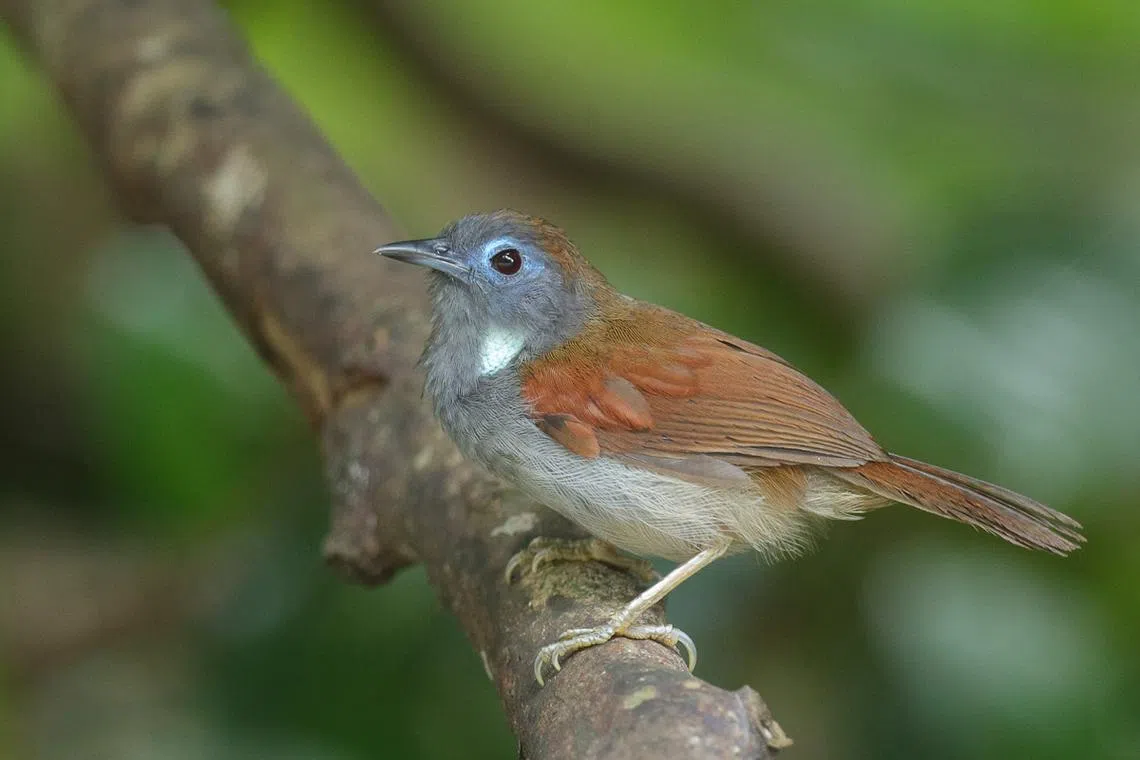Knitting nature into Singapore’s urban development
Sign up now: Get ST's newsletters delivered to your inbox

Chestnut-winged babbler at Upper Peirce Reservoir Park.
PHOTO: FRANCIS YAP, SINGAPORE BIRD PROJECT
Follow topic:
SINGAPORE - In land-scarce Singapore, keeping natural habitats intact while making way for urban development is a balancing act.
Only about 5 per cent of land is now protected, including four nature reserves. But green spaces are set to grow as the country envisions being a City in Nature.
The National Parks Board (NParks) has turned more than 450ha of forested areas surrounding the four nature reserves into nature parks, which act as buffers to protect the nature reserves from the impact of human activity and preserve the habitats for some forest-dwelling creatures.
By 2030, there would be species recovery plans for 100 plant and 60 animal species, as well as 500km of park connectors.
And 300km of roadside greenery would have been enhanced to replicate the structure of forests, to help animals such as birds and butterflies move from one green space to another, and connect areas of high biodiversity to urban areas.
New species are still being discovered here – most recently, a cockroach
Dr Sonja Luz, chief executive of conservation group Mandai Nature, said: “(The authorities) have done a good job in trying to connect as many green spaces as possible and that has helped some species.
“As a city-state, we must think outside the box and develop innovations that support the balance between urban living and nature conservation. You have to build with nature, not against it.”
Ecologist and conservationist Anuj Jain noted that thicker and denser ecological corridors like the Rail Corridor are better than nature ways and park connectors for connecting habitats across Singapore that have been fragmented by roads and infrastructure.
If species isolated in these fragments are not able to find mates, it would not bode well for the population’s survival, said Mr Muhammad Nasry, executive director of the Singapore Youth Voices for Biodiversity. One of these is the chestnut-winged babbler, a 12cm-long bird that dwells close to the dark forest floor in the Central Catchment Nature Reserve.
“They are not able to fly across the reservoirs or the golf courses around the reserve, and this means the different populations are quite isolated and very inbred,” he noted.
Other animals that could be similarly affected are frogs, snakes and the Sunda pangolin. A solution could be to move some animals to different fragments.


